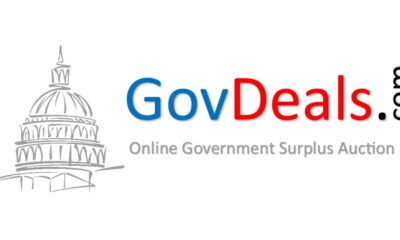Technology
Exploring the Benefits and Considerations of Wire-O Binding for Document Presentation

Document presentation plays an integral role in professional communication. The method used to bind pages can significantly affect the usability and perception of the information packaged within. Wire-O binding, also known as double loop or wire binding, has become increasingly popular due to its neat, professional look and versatile application across various document types. The pages in a wire bound book printing are held together by loops of wire that allow accessible page turning and lay-flat capability, which is particularly useful for reference materials, presentations, and reports.
The History of Document Binding
Tracing the lineage of document-binding offers a fascinating glimpse into how the preservation and presentation of documents have evolved. Early techniques were primarily functional, designed to keep scrolls and later codices intact. With the advent of the printing press, hardcover binding provided the durability needed for the increasing number of books, and the 20th century brought a boom in various binding techniques, catering to aesthetics and practicality. Wire-O binding emerged as a significant innovation, marrying elegance and utility, allowing the proliferation of reports, guides, and booklets in schools, offices, and conferences.
The Aesthetics of Wire-O Booklets
Documents should not be underestimated in their visual impact as physical embodiments of content. Wire-O booklets boast a clean, sophisticated edge that enhances the professionalism of the material. Whether presented in a boardroom or displayed on retail shelves, their aesthetic quality draws the eye and invites interaction. The metallic spiral infuses a contemporary feel, while the ability to customize the cover design enables complete coherence with corporate branding or campaign themes. The result is a premium-quality document that reflects well on the provider and engages the user.
Functionality and Usability
In practical terms, Wire-O binding serves users well beyond mere aesthetics. The most notable feature is the 360-degree rotation of bound pages, which allows for full-page repositioning without stress to the spine – making it possible to keep the booklet open to a particular page hands-free. This feature proves invaluable in environments where referencing material quickly and efficiently is crucial, such as cookbooks in kitchens, workshop instruction manuals, or study guides in classrooms. Furthermore, the binding wire’s resilience ensures longevity, resisting wear and tear from frequent use.
Choosing the Right Binding for Your Project
Several considerations come to the fore when selecting the most suitable binding option for a project. The type of document, the intended audience, the expected lifespan, and, of course, the budget are all instrumental factors. Wire-O binding is typically ideal for documents that balance a high-end look and functionality. Professional presentations, proposals, manuals, and agendas are just a few examples where Wire-O binding can provide the necessary edge. Additionally, it can cater to various sizes, accommodate many pages, and offer a more substantial feel than staple-bound or loose-leaf papers.
The Process of Wire-O Binding
Creating documents with Wire-O binding is a precise process involving carefully considering both form and function. The appropriate paper weight, cover design, and wire are meticulously chosen to suit the purpose and aesthetics of the finished product. Suppose you want to lessen your environmental effect and satisfy customers who are growing more environmentally conscious. In that case, you must also stay updated with the latest sustainability and materials advancements. Doing so ensures that their documents are visually appealing, durable, and environmentally responsible.
Advantages of Wire-O Booklets for Certain Industries
Some sectors stand to benefit more prominently from Wire-O booklets. Educational institutions, for instance, often require materials that students can use extensively and refer to easily during learning activities. Likewise, businesses may opt for Wire-O binding when producing marketing content that needs to lay flat, such as catalogs or lookbooks. Moreover, quickly accessing information makes Wire-O-bound documents particularly advantageous for conference attendants or workshop participants. Considering the needs of more niche markets, self-publishers find this binding method appealing for its professional finish and the value it adds to their published works. As a testament to this approach’s versatility, self-published authors can leverage Wire-O binding effectively for volumes that range from poetry to how-to guides, enjoying the mix of beauty and practicality it offers.
Creative Customizations for Wire-O Binding
One of the perks of Wire-O binding is the array of creative customizations available. The option to vary the sizing, incorporate die-cut covers for a unique silhouette, and use specialty papers to accentuate the tactile sensation encourages creators to think outside the box. Even the wire can be customized in color to match branding elements or to complement the design palette of the booklet’s cover. These thoughtful details contribute to a brand’s storytelling and identity, presenting a document and a memorable experience.
Case Studies: Effective Uses of Wire-O Booklets
Real-world applications offer demonstrable evidence of Wire-O booklet efficacy. In the professional sphere, high-stakes pitches and strategy documents are often Wire-O bound to ensure ease of presentation and durability. Presenting work in Wire-O portfolios, which can lay flat on any page without the risk of the booklet snapping shut, allows creative professionals, such as graphic designers and photographers, to showcase their work visually. In the technical realm, Wire-O binding accommodates the revision-friendly nature of instructional guides and manuals, where information might require frequent updates.
Future Trends in Document Binding
Although current trends in document binding highly favor Wire-O, the future beckons with the promise of further innovations that consider changing needs and advancing technologies. As the digital domain continues to grow, the physical presentation of documents remains indispensable in many scenarios. Yet, the question of how digital advancements will integrate with traditional binding methods forms an intriguing dialogue within the printing and publication industry. With that said, the tactile appeal and practical functionality of Wire-O binding are likely to sustain its popularity for the foreseeable future.
Technology
Why Blunturi is Taking the Blogosphere by Storm

Welcome to the exciting world of Blunturi, where blogging meets innovation and creativity! Founded by a passionate team of tech enthusiasts, Blunturi is revolutionizing the blogosphere with its unique features and user-friendly platform. If you’re ready to take your blogging experience to new heights, then buckle up as we dive into why Blunturi is the talk of the town among bloggers worldwide.
The Unique Features of Blunturi
Blunturi stands out in the blogosphere for its unique features that cater to both seasoned bloggers and newcomers alike. One standout feature is its intuitive drag-and-drop interface, making it effortless to create visually stunning blog posts without any coding knowledge needed.
Additionally, Blunturi offers a wide range of customizable templates that can be easily tailored to reflect each blogger’s individual style and branding. This flexibility allows users to truly make their blogs their own and stand out in a crowded online space.
Another key feature of Blunturi is its robust analytics tools, providing bloggers with valuable insights into their audience demographics, engagement metrics, and popular content. This data-driven approach empowers bloggers to optimize their strategies for maximum impact and reach.
Moreover, Blunturi boasts seamless integration with social media platforms, enabling users to effortlessly share their blog posts across various channels with just a few clicks. This helps drive traffic back to the blog and expand its online presence.
Benefits of Using Blunturi for Blogging
Imagine a platform designed to streamline your blogging experience, making it easier and more efficient. That’s where Blunturi comes in. With its user-friendly interface and intuitive tools, Blunturi empowers bloggers to create engaging content effortlessly.
One of the key benefits of using Blunturi is its advanced analytics feature. By providing valuable insights into your blog’s performance, you can better understand your audience and tailor your content to meet their needs.
Moreover, Blunturi offers seamless integration with social media platforms, allowing you to easily share your posts and reach a wider audience. This not only boosts your online presence but also drives traffic back to your blog.
In addition, Blunturi prioritizes SEO optimization, helping your blog rank higher on search engine results pages. This means increased visibility and organic traffic for your content.
By leveraging the benefits of Blunturi for blogging, you can enhance productivity, expand your reach, and ultimately elevate the success of your blog.
Success Stories from Blunturi Users
Picture this: bloggers from all walks of life, each with a unique voice and story to share. Blunturi has become the platform where these voices can resonate and reach a wider audience than ever before. Users have reported significant growth in their readership and engagement levels since joining the Blunturi community.
One user, Sarah, saw her blog traffic triple within just two months of using Blunturi’s tools for content promotion. Another user, Mark, credits the platform for helping him secure collaborations with top brands in his niche. These success stories are not isolated incidents but rather a testament to the power of Blunturi in elevating bloggers to new heights.
The sense of camaraderie among Blunturi users is palpable – they support one another, exchange tips and tricks, and celebrate each other’s victories. It’s more than just a blogging platform; it’s a thriving community that fosters growth and creativity.
How to Get Started with Blunturi
Are you ready to dive into the world of blogging with Blunturi? Getting started is easier than you think. The first step is to create an account on the Blun.turi platform. Simply sign up with your email address and choose a username that reflects your blog’s identity.
Once you’ve set up your account, take some time to explore the features and settings available on Blun.turi. Customize your profile, upload a profile picture, and add a brief bio to introduce yourself to the blogging community.
Next, it’s time to start creating content. Click on the “Create New Post” button to begin crafting your first blog post. You can easily format text, add images, embed videos, and customize the layout of your post using Blun.turi’s user-friendly editor.
Don’t forget to optimize your posts for SEO by including relevant keywords in your content and meta tags. This will help increase visibility and attract more readers to your blog.
Hit publish and share your masterpiece with the world! Engage with other bloggers on the platform by liking, commenting, and sharing their posts. Building relationships within the Blu.nturi community can help grow your audience and inspire collaboration opportunities in the future.
Future Plans for Blunturi and the Blogging Community
Exciting times lie ahead for Blunturi and the vibrant community of bloggers it serves. The platform is constantly innovating to provide even more tools and features to enhance the blogging experience. Moving forward, Blunturi aims to further streamline the content creation process, making it easier for users to craft compelling posts that resonate with their audience.
Additionally, Blunturi plans on expanding its network of bloggers, fostering a supportive environment where creators can connect, collaborate, and grow together. By facilitating partnerships and opportunities within the community, Blunturi strives to empower bloggers to reach new heights of success in their online endeavors.
With a keen focus on user feedback and market trends, Blunturi is committed to staying at the forefront of blogging technology. The future holds endless possibilities for both the platform and its dedicated users as they continue to shape the digital landscape with their unique voices and perspectives.
Conclusion
Blunturi is undeniably revolutionizing the blogosphere with its innovative approach to blogging. With a user-friendly platform, diverse features, and a supportive community, Blunturi has become the go-to choice for bloggers looking to elevate their online presence.
Whether you are a seasoned blogger or just starting out on your blogging journey, Blun,turi offers a plethora of tools and resources to help you succeed. From seamless customization options to powerful analytics tools, this platform equips users with everything they need to create engaging and impactful content.
As more and more bloggers join the Blu,nturi community and share their success stories, it’s clear that this platform is here to stay. By providing a space where creativity thrives and connections are made, Blun,turi is shaping the future of blogging in exciting ways.
So why wait? Join Blu,nturi today and experience firsthand why this platform is taking the blogosphere by storm. Elevate your blogging game with Blun,turi – where passion meets innovation!
Technology
ezclasswork: The Ultimate Tool for Streamlining Your Academic Workflow

Are you tired of juggling multiple assignments, deadlines, and study materials all at once? Do you wish there was a tool that could help streamline your academic workflow and make studying more efficient? Look no further than ezclasswork – the ultimate solution for students looking to stay organized, focused, and on top of their game. Say goodbye to chaos and hello to productivity with ezclasswork!
Features and Benefits of ezclasswork
Are you tired of juggling multiple platforms to manage your academic tasks? Say goodbye to the chaos and hello to ezclasswork, your all-in-one solution for streamlining your academic workflow! With its user-friendly interface, ezclasswork makes organizing assignments, deadlines, and study materials a breeze.
One of the key features of ezclasswork is its centralized dashboard where you can access all your course information in one place. From assignment reminders to class schedules, everything you need is right at your fingertips. Plus, with customizable notifications, you’ll never miss an important deadline again.
But wait, there’s more! ezclasswork also offers collaboration tools that allow you to easily connect with classmates for group projects or study sessions. No more endless email chains or confusing communication – just seamless teamwork at your fingertips.
And let’s not forget about the time-saving benefits of ezclasswork. By automating repetitive tasks and providing real-time updates on assignments and grades, you can focus on what truly matters – learning and excelling in your academics. Say hello to efficiency with ezclasswork!
How to Get Started with ezclasswork
Getting started with ezclasswork is a breeze. Begin by signing up for an account on the platform, which only takes a few minutes. Once you’re logged in, you can start exploring the various features available to streamline your academic workflow.
The dashboard is where all the magic happens – here, you can create tasks, set reminders, and organize your schedule effortlessly. Don’t forget to customize your profile settings to tailor ezclasswork to your specific needs.
Next, start adding your courses and assignments to stay on top of deadlines and due dates. The intuitive interface makes it simple to input all the necessary information without any hassle.
Take advantage of the collaboration tools within ezclasswork to work on group projects or study sessions with classmates seamlessly. And don’t hesitate to reach out to customer support if you have any questions along the way – they’re always ready to help!
Case Studies: Real-Life Examples of How ezclasswork Has Helped Students
Meet Sarah, a busy college student juggling multiple classes and extracurricular activities. With ezclasswork, she effortlessly organized her assignments, deadlines, and study materials in one convenient platform. By setting reminders and utilizing the calendar feature, Sarah never missed a due date again.
John struggled with time management until he discovered ezclasswork. Through the task prioritization feature, he efficiently tackled his coursework while balancing part-time work commitments. The progress tracking tool allowed John to monitor his academic performance and make necessary adjustments to improve his grades.
Sophia found group projects daunting until she utilized ezclasswork’s collaborative features. With shared calendars and file sharing capabilities, coordinating with team members became seamless. Communication within the group improved significantly as they worked together towards common goals.
These real-life examples demonstrate how ezclasswork has revolutionized the academic workflow for students like Sarah, John, and Sophia.
Comparison to Other Academic Workflow Tools
When it comes to choosing the right academic workflow tool, ezclasswork stands out from the crowd for its user-friendly interface and comprehensive features. Unlike other tools that may focus on specific aspects of academic life, ezclasswork offers a holistic solution for students looking to streamline their workflow efficiently.
While some tools may excel in one area, they often lack the versatility and integration that ezclasswork provides. From organizing assignments and deadlines to collaborating with classmates seamlessly, ezclasswork covers all bases effectively.
In comparison to other tools on the market, ezclasswork’s intuitive design makes it easy for users to navigate and customize according to their unique needs. Its ability to adapt to different learning styles sets it apart as a truly dynamic tool in the realm of academic organization.
For students seeking a reliable and efficient way to manage their academic workload, choosing ezclasswork can make all the difference in optimizing productivity and achieving success in their studies.
Tips for Maximizing Productivity with ezclasswork
Looking to take your academic workflow to the next level with ezclasswork? Here are some tips for maximizing productivity:
- Organize your tasks by priority and due date using the task management feature. This will help you stay on top of deadlines and ensure nothing falls through the cracks.
- Utilize the calendar function to schedule study sessions, project milestones, and exams. Setting reminders can help you stay focused and avoid last-minute cramming.
- Collaborate with classmates by sharing notes, study guides, or project files in real-time. This fosters a sense of community and allows for efficient group work.
- Take advantage of the goal-setting tool to track your progress throughout the semester. Setting achievable goals can motivate you to stay on track and reach academic success.
- Explore different ways to customize ezclasswork according to your preferences. From color-coding tasks to creating custom tags, make it work for you in a way that enhances your workflow efficiency.
Future Updates and Improvements
Exciting times lie ahead for ezclasswork users as we look towards future updates and improvements that will elevate the platform even further. Our dedicated team is constantly working on enhancing the user experience by listening to feedback and implementing innovative solutions.
One of the areas we are focusing on is expanding integration capabilities with other popular academic tools, making it easier for students to streamline their workflow seamlessly. Additionally, we are committed to introducing new features that will cater to specific needs and preferences of our diverse user base.
Enhanced customization options, improved collaboration features, and advanced analytics tools are just some of the enhancements in the pipeline. We aim to empower students to take control of their academic journey like never before through intuitive design and cutting-edge technology.
Stay tuned for these upcoming updates that will revolutionize how you manage your academic workload efficiently with ezclasswork!
Conclusion
Ezclasswork stands out as the ultimate tool for students looking to streamline their academic workflow. With its user-friendly interface, comprehensive features, and proven track record of success, it has become a go-to solution for managing assignments, deadlines, and study materials effectively.
By utilizing ezclasswork’s innovative platform, students can enhance their productivity and organization skills while reducing stress levels associated with academic responsibilities. The real-life examples and testimonials shared in this article highlight the tangible benefits that users have experienced firsthand.
As ezclasswork continues to evolve and improve based on user feedback and technological advancements, it remains at the forefront of academic workflow tools. Students can look forward to future updates that will further optimize their learning experience and help them achieve academic success with ease.
Start your journey towards a more efficient and organized approach to academics today by incorporating ezclasswork into your daily routine. Experience firsthand how this powerful tool can revolutionize the way you manage your studies. Say goodbye to chaos and hello to seamless workflows with ezclasswork!
Technology
Why Amazon ACM23X is the Ultimate Choice for Security and Surveillance

Step into the future of security and surveillance with Amazon ACM23X. Imagine a world where peace of mind meets cutting-edge technology, all at your fingertips. This innovative system is not just a solution; it’s a revolution in safeguarding what matters most to you. Let’s dive into why the Amazon ACM23X is the ultimate choice for your security needs!
Features and Benefits of Amazon ACM23X
When it comes to security and surveillance, the Amazon ACM23X stands out with its impressive features. This system offers high-definition video quality, ensuring clear footage at all times. With advanced motion detection technology, you can receive real-time alerts on your mobile device when any movement is detected.
The Amazon ACM23X also boasts two-way audio communication, allowing you to communicate with visitors or intruders from wherever you are. Its night vision capability ensures 24/7 monitoring even in low-light conditions. The weatherproof design makes it suitable for both indoor and outdoor use, providing all-around protection for your property.
Additionally, the Amazon ACM23X offers cloud storage options for convenient access to recorded footage anytime, anywhere. Easy installation and user-friendly interface make it ideal for homeowners looking to enhance their security measures without hassle.
Comparison with Other Security and Surveillance Systems
When it comes to security and surveillance systems, Amazon ACM23X stands out from the crowd. Unlike other systems that may offer limited features or complicated installations, the ACM23X is user-friendly and packed with advanced functionalities.
Compared to traditional CCTV setups, the Amazon ACM23X provides high-definition video quality and seamless integration with smart home devices. Its motion detection capabilities are top-notch, ensuring you never miss a moment of potential activity around your property.
While some systems require monthly subscriptions for cloud storage or monitoring services, the ACM23X offers cost-effective solutions with free storage options and easy access to footage through the Amazon app. Additionally, its compatibility with Alexa voice commands sets it apart as a convenient and efficient choice for homeowners looking to enhance their security measures.
In terms of affordability and performance, few can rival the features and benefits that Amazon ACM23X brings to the table in today’s competitive market.
Real-Life Testimonials from Customers
Customers who have installed the Amazon ACM23X security and surveillance system rave about its reliability and ease of use. One customer mentioned how the crystal-clear images captured by the cameras helped identify a trespasser on their property, leading to a swift resolution with law enforcement.
Another customer praised the night vision capabilities of the ACM23X, highlighting how it provided peace of mind during nighttime hours. The motion detection feature was also commended for sending instant alerts whenever activity was detected around their premises.
Customers appreciate the user-friendly interface that allows them to monitor their property remotely through the mobile app. The seamless integration with other smart home devices was also a standout feature mentioned in multiple testimonials.
In essence, real-life experiences shared by customers highlight the effectiveness and efficiency of the Amazon ACM23X security system in enhancing home security measures.
How to Install and Set Up the System
Setting up the Amazon ACM23X security and surveillance system is a breeze. Start by unboxing the package and familiarizing yourself with the components. The user manual provides clear step-by-step instructions for installation.
Mount the cameras in strategic locations around your property using the included mounting hardware. Ensure they are positioned to capture optimal footage of key areas.
Next, connect the cameras to the central monitoring unit using the provided cables. Power on each device and follow the on-screen prompts to pair them together seamlessly.
Accessing live footage and adjusting settings can be done conveniently through the user-friendly interface either on your computer or mobile device. Customize alerts and notifications based on your preferences for added security.
With just a few simple steps, you can have peace of mind knowing that your property is under reliable surveillance with Amazon ACM-23X.
Cost-Effectiveness of Amazon ACM23X
When it comes to investing in a security and surveillance system, cost-effectiveness is key. Amazon ACM23X offers exceptional value for the features it provides. With its competitive pricing, you can enhance your security without breaking the bank.
The long-term savings from deterring theft or vandalism with Amazon ACM23X make it a smart investment. Its advanced technology ensures reliable monitoring at an affordable price point. You won’t have to compromise on quality or performance with this budget-friendly option.
By choosing Amazon ACM23X, you not only protect your property but also save money in the process. The peace of mind that comes with knowing your premises are secure is invaluable. With its cost-effective solution, Amazon ACM23X stands out as a top choice for those looking to safeguard their assets without overspending.
Conclusion
In a world where security and surveillance are paramount, the Amazon ACM23X stands out as the ultimate choice for safeguarding your property. With its advanced features, ease of installation, and cost-effectiveness, this system offers unparalleled protection and peace of mind.
Don’t compromise on security – choose Amazon ACM-23X today to experience top-notch surveillance like never before. Stay one step ahead with cutting-edge technology that keeps you safe around the clock. Trust in Amazon ACM-23X for all your security needs and rest easy knowing you’re in good hands.
-

 Entertainment5 months ago
Entertainment5 months agoUnveiling the World of HDToday
-

 Technology5 months ago
Technology5 months agoUnveiling the Wonders of Teltlk Technology
-

 Business5 months ago
Business5 months agoUnlocking Opportunities with GovDeals – Liquidity Services Marketplace
-

 Technology5 months ago
Technology5 months agoÇebiti: Corporate Operations with an Integrated AI Platform
-

 Business5 months ago
Business5 months agoThe Ultimate Guide to High Risk Merchant Services
-

 Health5 months ago
Health5 months agoIlluminate Your Scans: Unveiling the Magic of Luminous Scans in Modern Imaging
-

 Health4 months ago
Health4 months agoExploring the Benefits of wellhealthorganic Home Remedies
-

 Entertainment5 months ago
Entertainment5 months agoRecord of the Mightiest Lord Chapter 1: Unveiling the Epic Saga










